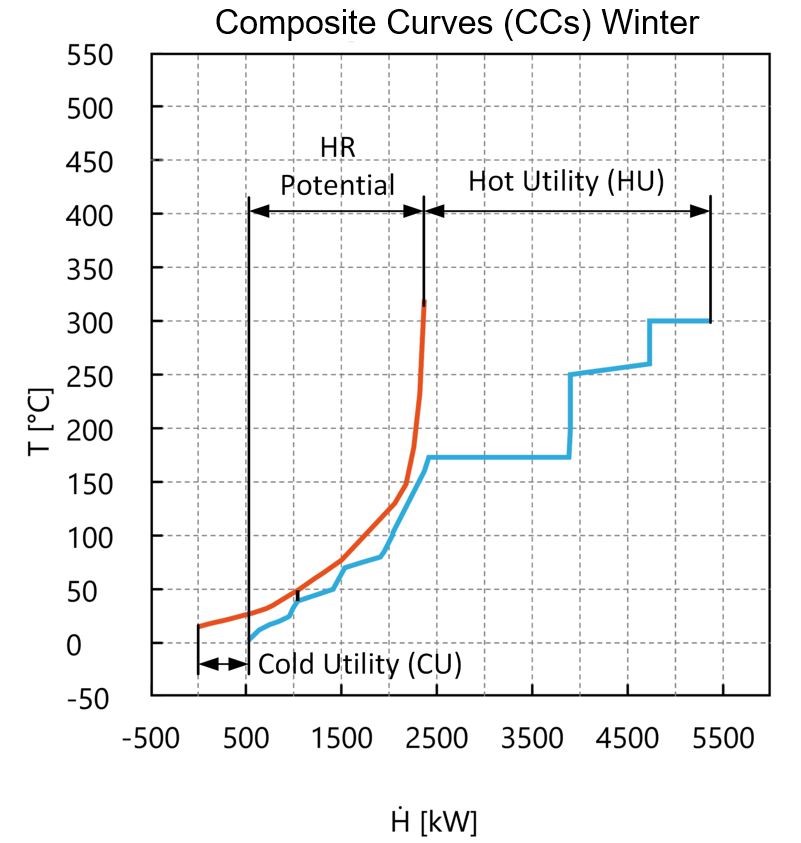Process Integration, using Pinch Analysis, plays a central role in Work Package 4. During previous Swiss energy research activities, a large number of Pinch Analysis projects conducted in the Swiss industry were evaluated. It was concluded that the achievable economic energy savings (according the conditions from the FOEN) are at least 3 TWh/a and the CO2 reduction is approximately half a million tonne per annum. For a mean economic lifetime of 10 years, 385 CHF can be saved per reduced tonne of CO2.
Conservative estimate for the Swiss industry sector:
Energy Savings | min. 3 TWh/a |
Reduction in CO2 emissions | 0.54 Mio. t CO2/a |
Net savings per reduced tonne of CO2 | 385 CHF t/CO2 |
These estimates were made before the current increase of energy prices, i.e. the today’s economic saving potential is even higher. Pinch Analysis is (by far) the most effective method to reduce energy consumption and CO2 emissions in industry. With the development of additional methods and practical tools in Work Package 4, Pinch Analysis can also be applied in SMEs, and the potential will be increased significantly in the future.
For more details, contact the PinCH team at HSLU-TEVT, pinch@hslu.ch
